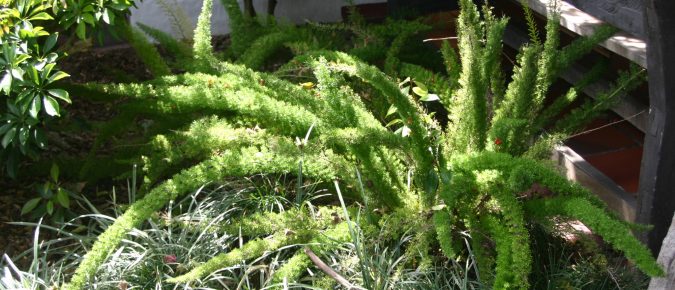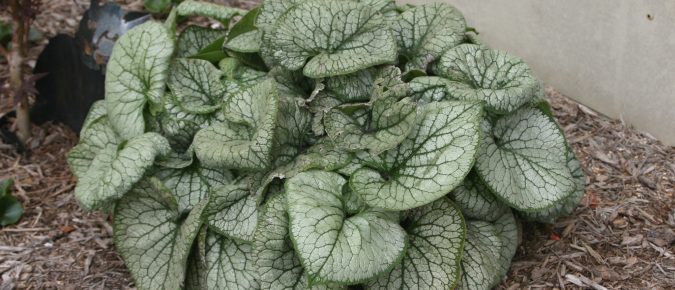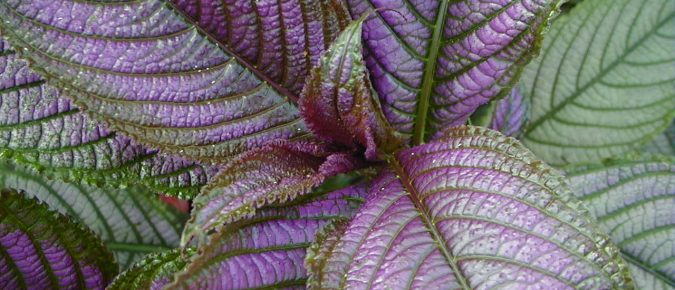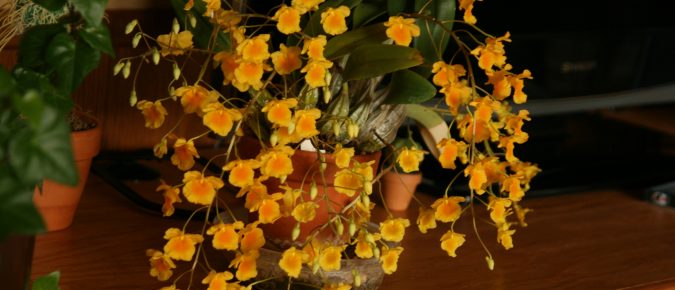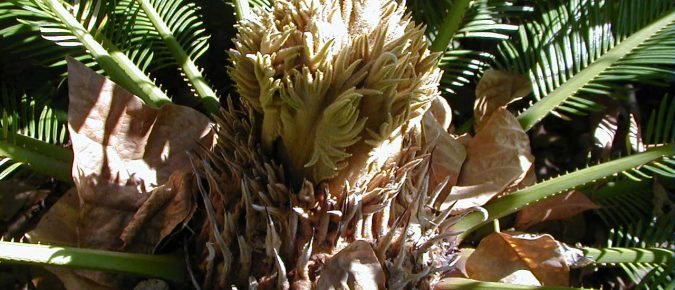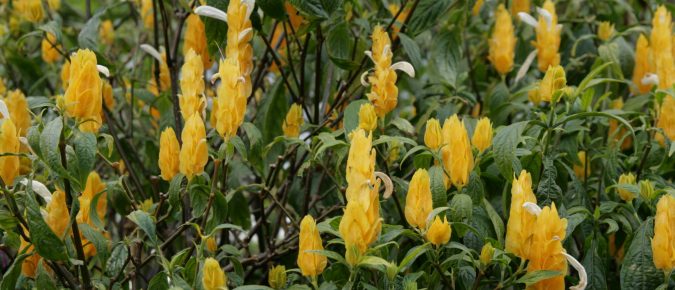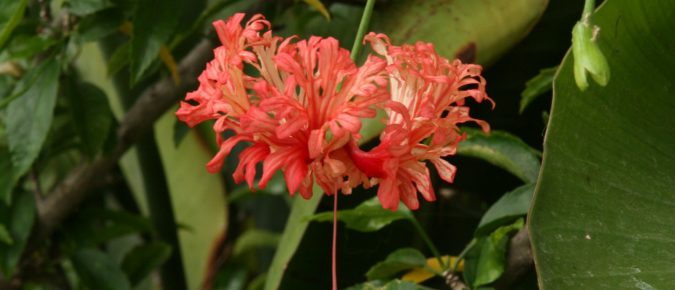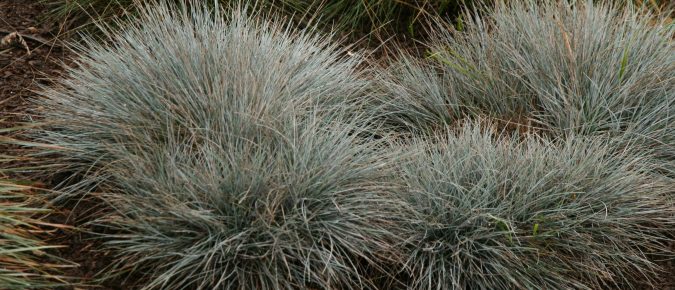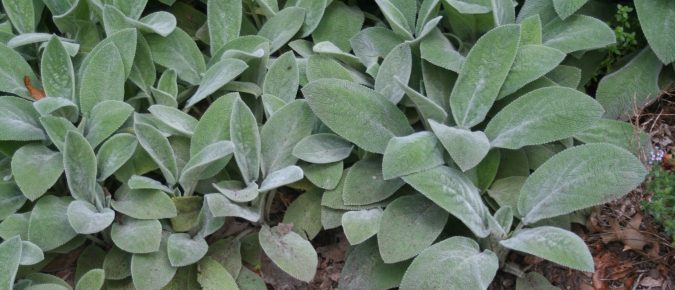Asparagus fern is a South African native which is not a fern, but is related to the edible asparagus. The bright green, ferny foliage of this tender perennial makes it a nice houseplant and a good counterpoint to brightly colored flowers in an outdoor seasonal planting. To learn more about this plant, read this article…
If you’re looking for a houseplant with attractive foliage that’s not just another leafy thing, and maybe some long-lasting flowers, consider a bromeliad. This plant family has a wide variety of species with many that are easily grown indoors if you choose a type adapted to your conditions. Learn more about this interesting group of plants in this article…
Brunnera macrophylla ‘Jack Frost’ has been chosen by the Perennial Plant Association as their Plant of the Year 2012. With light blue flowers in spring and bright, silvery, crackled-looking foliage that really shines in the shade, this plant is a great addition to most gardens. You can find out more about this special cultivar by reading this article…
Looking to add some drama to your garden? Forget flowers and go with iridescent foliage instead for a real show-stopper! Persian shield is a tender perennial grown as an annual in our climate that has been used since Victorian times for its ornamental foliage. To learn more about this exotic, but easily grown plant, read this article…
If you’re lookign for a miniature orchid with a big flower show Dendrobium lindleyi is the one for you. This compact epiphytic species native to Southeast Asia produces spectacular showers of golden flowers. To learn more about this exotic yet easy-to-grow plant, read this article…
Are you familiar with the ancient group of plants called cycads? These “living fossils” have been around since the time of the dinosaurs, although they are no longer as numerous as they once were. These cone-bearing plants hail primarily from the tropics, but many are easily grown as container plants. To learn more about cycads, read this article…
Pachystachys lutea is a common landscape ornamental in tropical areas, but you can grow it at home. It’s upright, bright yellow to orange inflorescences contrast nicely with glossy, dark green foliage. To learn more about growing this exotic flowering tropical plant as an outdoor seasonal plant or houseplant, read this article…
Rosemary is an aromatic plant with a long history of use as a culinary and medicinal herb. It is easily grown in containers that can be moved indoors for the winter. To learn more about rosemary, see this article…
Hibiscus is a quintessential tropical flower, with big, brightly-colored blossoms. But there is a species that has very different, pendant flowers with elaborately dissected and recurved petals. Like other tropical hibiscus, Hibiscus schizopetalus is a tender plant that cannot survive our winters but can be grown as a houseplant. To learn more about this species, read this article…
Blue fescue (Festuca glauca) is a low clumping ornamental grass with blue-green foliage. This cool season grass can be used as a specimen or in masses. This article provides more details on growing this attractive grass in the landscape.
Solomon’s seals are woodland plants with arching stems. There are a number of both native and exotic species and cultivars that are used primarily as foliage plants in ornamental shade gardens (as their small hanging flowers are attractive, but relatively inconspicuous). To learn more about the genus Polygonatum read this article…
Lamb’s ears (Stachys byzantina) are a good addition to Midwestern gardens for their silvery foliage. One cultivar that stands out is ‘Big Ears’ for it’s extra large leaves. The leaves of this one aren’t quite as silver as many others, but it offers bold texture in a low mounding plant. To learn more about this big-leafed beauty, read this article…

